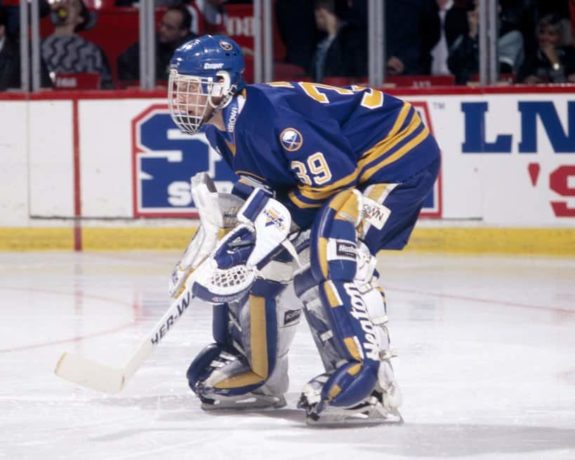There are so many clichés on what it takes to win in team sports. A strong offence can beat a strong defence. Defence wins championships. It takes a full team effort. And the latter might be the best way of leading into the introduction to this new book.
It’s called It Takes 23 to Win: Building and Being Part of Great Hockey Teams – authored by Jason Farris. And it’s a book with quite an interesting concept.
About the Book
With over 260 pages that include conversations with some top-notch former players, this book delves into the art of building a winning team. The focus? That is doesn’t just take a superstar or two or an incredible goaltender to win a championship. Even a good top six won’t secure any team a win, rather it’s about the 23-man roster as a whole in the game of hockey.
Each player has a role. Whether it be a penalty killer, a master in the face-off dot or a fourth-line physical presence, each player has a job to do.
To do that, Farris takes an interesting approach to showcasing how teams are made up. He harnessed a group of former players, including the likes of Sergei Gonchar, Dominik Hasek, Brad May and Joe Nieuwendyk, along with 19 others and had them build 23-man fantasy-type rosters compiled of former teammates.

“I’m interested in 23-man units. Twelve forward and the two extras and then, you know, your seven defenceman and two goaltenders,” said Farris during an interview with TSN 1040 Vancouver. “But I’m not just interested in the star goaltender and the high-flying right winger. I’m interested in the third line, I think there’s a lot to be learned from guys that play down the lineup and the different roles that get played on the teams. And in hockey, unlike really all the other major sports, it really does take the 23 guys on the roster to win at some point down the road.”
As Farris points out, the 23 players that he compiled come from all sorts of positions on their former clubs. Some are Hall-of-Famers, while others are those depth players that have specific roles within the lineup. Each player was given constraints on picking their lineup, including the fact that the players they chose had to play in their positions from then their fantasy general manager played with them, for example no one could put Wayne Gretzky on their fourth line. They had to have true fourth-line players to make up their lineup.
Related: Book Review – Warriors on the Ice: Hockey’s Toughest Talk
The result, a widespread diversity of players were selected by each and every player (or fantasy GM). From the selection part of it, each player had to explain why they selected specific players. Was it their personality? Their on-ice toughness? What was it that made them so unique and a good choice in putting them into a 23-man roster?
What’s incredible is that each player had a different reason or a different anecdote as to why they selected specific players. What made them take a specific third- or fourth-line guy could’ve been their outspokenness in the dressing room or their unwillingness to give up on the ice and that’s what Farris is trying to get across in this book – that every player is important on a winning team.
Leadership: More Than a Letter
A former Executive Vice President with the Dallas Stars, it’s seems almost obvious that Farris would have some insight into what it would take a team to win. After all, he was around an NHL franchise and saw the inner workings of the team.
That considered, Farris allows the 23-man selection committee to do the talking – explaining what they see as important traits to a winning lineup.
For Brad Marsh, he recognizes the need for more than just a captain and the assistants in the dressing room.

“The leadership in the room is more than one C and two As, it takes a handful of guys,” said Marsh in Farris’ book. “If you look at any championship team they could have two, three, four and five captains, and that is what makes the team stronger because it brings the fence-sitters to them and the naysayers become fence-sitters to see which way it goes.”
While Marsh recognized the leadership of many within the dressing room, a guy like Terry Ruskowski talked about another important role player on a team he played for – coach Roger Neilson.
“I loved Roger Neilson as a coach,” said Ruskowski in It Takes 23 To Win. “He would write things [game honors] on the board after games. I never won anything and wasn’t super-talented, but I always worked hard. He created a category just for me in order to have me on the board every once in a while. I knew he did that on purpose, and I always appreciated it, because otherwise my name would never be brought up – sometimes that can be good news or bad news.”
Those are just two of many stories that Farris included in his book. Some talk about the specifics on players they select for their 23-man roster, while others describe what the dressing rooms were like throughout their careers and what they learned from their experiences.
It’s a different concept, that’s for sure. But it’s an interesting one that looks at how to build that winning team. Farris even closes out by taking a closer look at some recent winning clubs and rivalries in international play and what made them winners. What made them Stanley Cup champions?
It Takes 23 To Win isn’t a team-specific book. It’s not a player specific book, but one that could help any of its readers understand the make-up of a winning franchise. Highly recommended, Farris’ book is one that will give you the insight from both a player and a front office point of view.
You can get It Takes 23 to Win at www.23toWin.com.